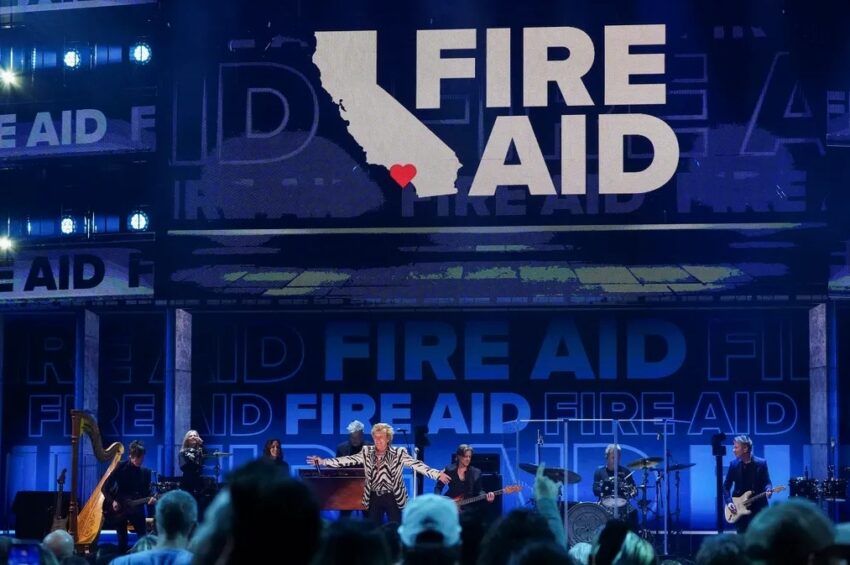Serious questions are being raised about the allocation of the nearly $100 million raised by the “Fire Aid” benefit concerts earlier this year, held in the wake of devastating fires in Los Angeles. Despite a high-profile fundraising effort that brought together celebrities, major media attention, and two simultaneous concert stages, many residents in hard-hit areas say they have received no direct aid.
At issue is how the money is being distributed—and whether the funds are truly reaching fire victims or being funneled into unrelated or tangentially connected nonprofit initiatives.
Two local investigations—one by ABC affiliate KABC-7 and the other by independent journalists at Circling the News—offer conflicting insights into the use of Fire Aid’s funds. According to KABC-7’s reporting, $50 million from the first round of donations was distributed to approximately 120 nonprofit organizations. Some of those grants included $250,000 to the Pasadena Humane Society for animal care, and $100,000 to Heal the Bay for coastal water testing.
These uses, while not fraudulent, raise concerns about prioritization. Residents in communities like Pacific Palisades, Malibu, Altadena, and Pasadena—where the Palisades and Eaton Fires destroyed homes and disrupted lives—have reported receiving no direct assistance. Instead, they say money has gone to well-established nonprofits, some of which are only tangentially related to fire recovery.
Investigative journalist Sue Pascoe, writing for Circling the News, and independent journalist James Li have drawn attention to what they describe as a major disconnect between donor intent and actual disbursement.
Pascoe reports that the Annenberg Foundation, which was tasked with managing the Fire Aid funds, has failed to respond to detailed questions about how much money, if any, has been directed to victims in the fire zones themselves.
When Pascoe contacted the Annenberg Foundation to ask which organizations in the Palisades received aid, she was met with silence—no returned calls, no replies to emails. In a conversation with a representative, she was told flatly that proceeds would not go directly to displaced residents, but rather to pre-selected nonprofit organizations.
This distribution model raises further concerns about oversight and eligibility. Critics argue that the process for vetting grant recipients was too lenient, allowing organizations with little or no direct engagement with fire victims to qualify. There is no public record of funds going to displaced homeowners or families who lost property or livelihoods.
At the heart of the issue is a lack of transparency. Donors likely believed their contributions would provide immediate relief to individuals and families affected by the fires. Instead, much of the money appears to have gone to nonprofits involved in secondary or environmental recovery work—worthy causes, but arguably not the most urgent.
The post Questions Are Surround $100 Million Fundraiser appeared first on Patriot Newsfeed.
Click this link for the original source of this article.
Author: Mark Stevens
This content is courtesy of, and owned and copyrighted by, https://patriotnewsfeed.com and its author. This content is made available by use of the public RSS feed offered by the host site and is used for educational purposes only. If you are the author or represent the host site and would like this content removed now and in the future, please contact USSANews.com using the email address in the Contact page found in the website menu.








